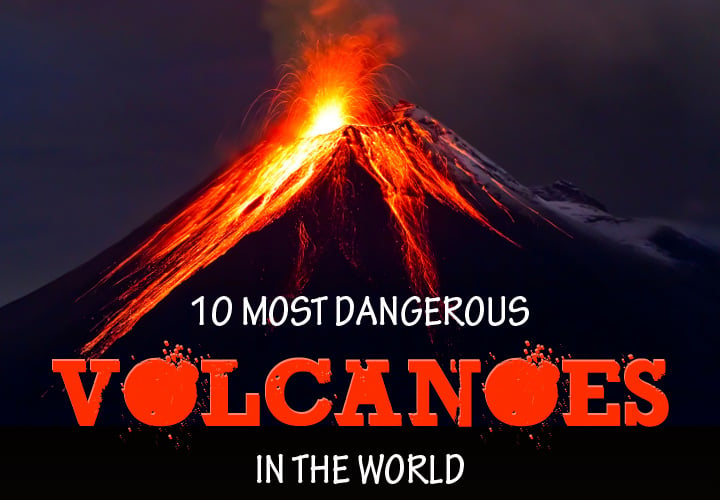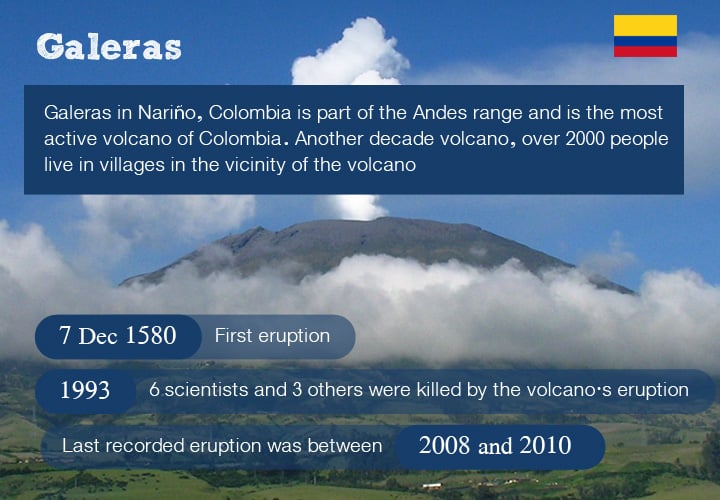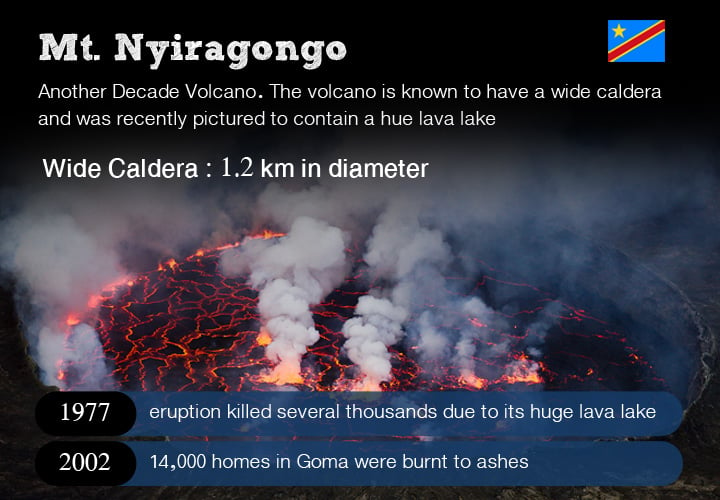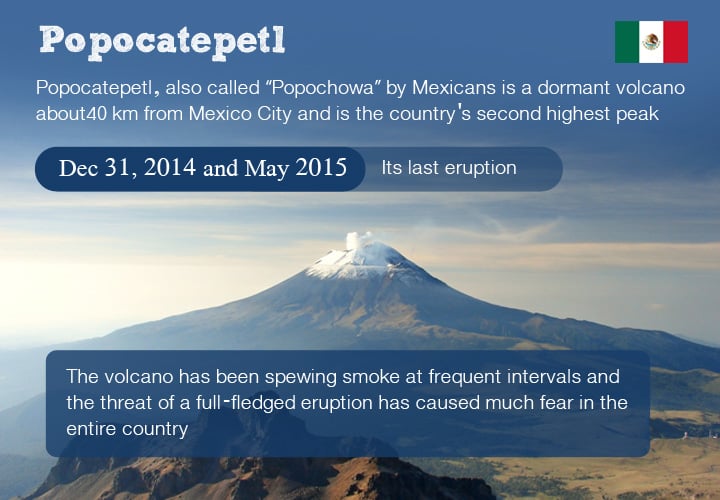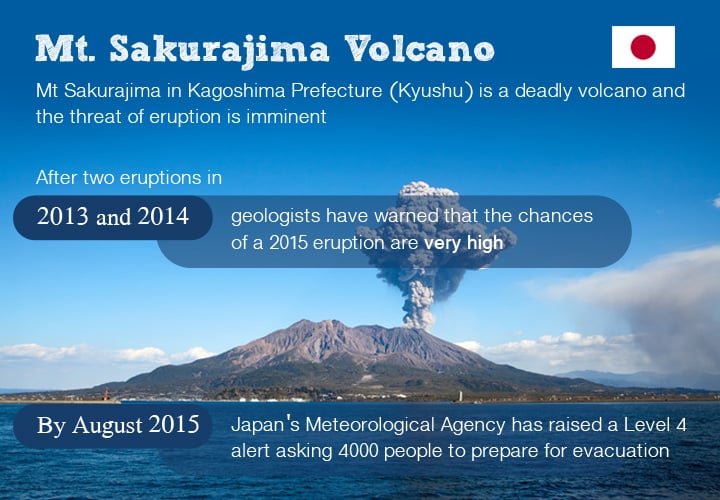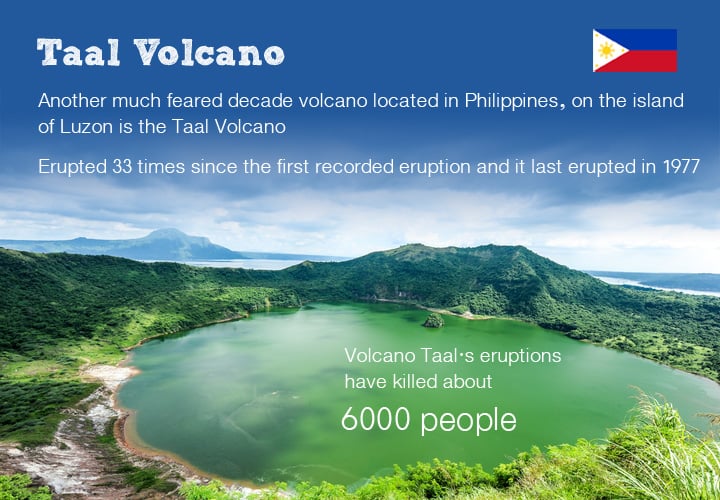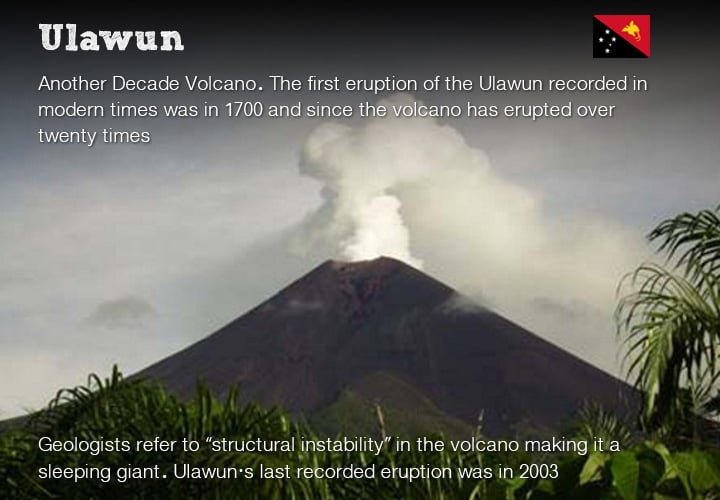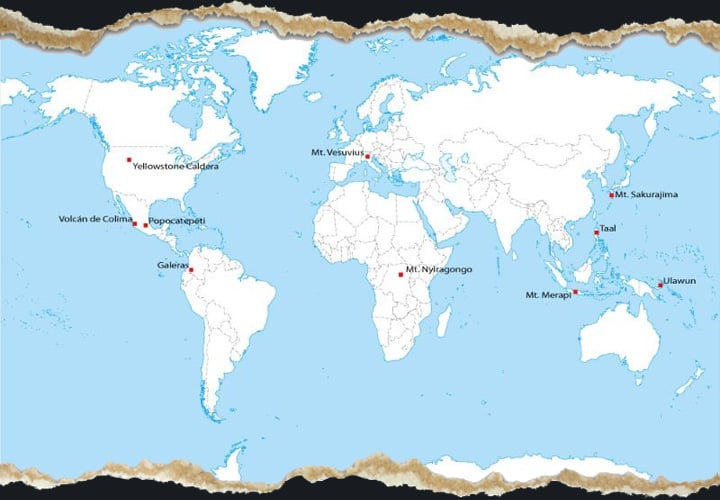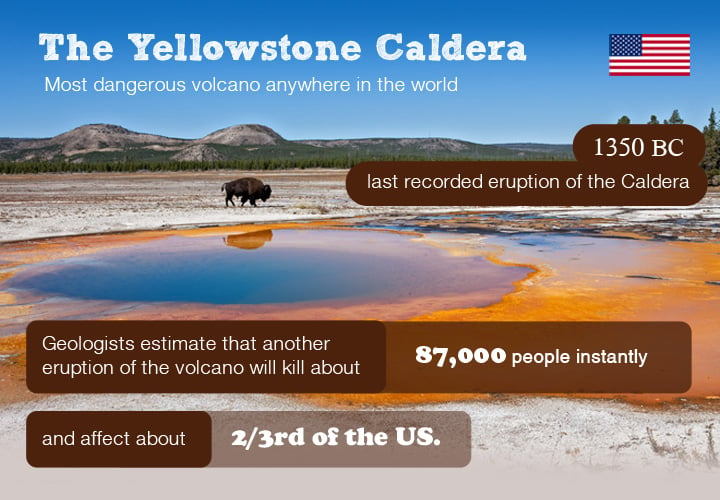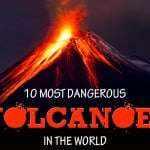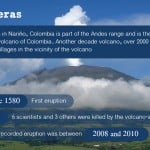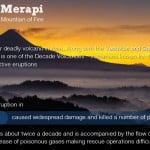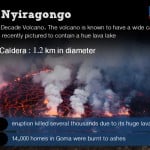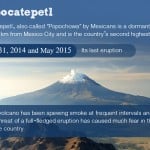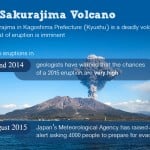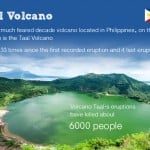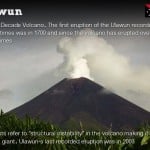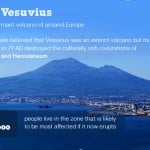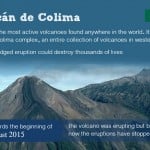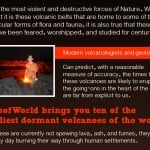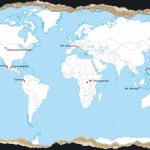Volcanoes are one of the most violent and destructive forces of Nature. While it is true that it is these volcanic belts that are home to some of the most spectacular forms of flora and fauna, it is also true that these volcanoes have been feared, worshiped, and studied for centuries now. Modern volcanologists and geologists can predict, with a reasonable measure of accuracy, the times that these volcanoes are likely to erupt but the going-ons in the heart of the Earth is far from explicit to us. In this feature, MapsofWorld brings you ten of the deadliest dormant volcanoes of the world. While these are currently not spewing lava, ash, and fumes, they may erupt any day burning their way through human settlements.
1. Yellowstone Caldera, U.S.A. – The Yellowstone Caldera and supervolcano is potentially the most dangerous anywhere in the world. It is located in Yellowstone National Park, Wyoming in the United States. The last recorded eruption of the Caldera was in 1350 BC. Geologists estimate that another eruption of the volcano will kill about 87,000 people instantly and affect about two-thirds of the U.S. Such a super eruption could release a thick layer of molten ash across a radius of 1,000 miles from the National Park and cause a nuclear winter across the nation.
2. Mt. Vesuvius, Italy – Mount Vesuvius, in Naples, on the west coast of Italy, is the only dormant volcano of mainland Europe. Through the major part of the 1st century, the Greeks believed that Vesuvius was an extinct volcano but its worst eruption in 79 AD destroyed the culturally rich civilizations of Pompeii and Herculaneum. Since then, Vesuvius has erupted many times and is now due for an eruption, say volcanologists. Over 600,000 people live in the zone that is likely to be most affected if it now erupts.
3. Popocatepetl, Mexico – Popocatepetl, also called “Popochowa” by the Mexicans, is a dormant volcano about 40 km from Mexico City and is the country’s second highest peak. Its last eruption was on December 31, 2014 and again in May 2015. The volcano has been spewing smoke at frequent intervals and the threat of a full-fledged eruption has caused much fear in the entire country. Activity has been erratic and intermittent but the threat posed by Popocatepetl is very real. In the past, the eruption of this volcano is believed to have buried a number of remains of the Aztec civilization.
4. Mt. Sakurajima Volcano, Japan – While Mount Fuji on Honshu Island may be better-known as a tourist attraction, Mt Sakurajima in Kagoshima Prefecture (Kyushu) is a deadlier volcano and the threat of eruption is imminent, say geologists. After two eruptions in 2013 and 2014, geologists have warned that the chances of a 2015 eruption are ‘very high’. The volcano’s explosive eruption in 1914 caused many thousands of deaths. By August 2015, Japan’s Meteorological Agency has raised a Level 4 alert asking 4,000 people to prepare for evacuation. Fears are that about 60,000 may be affected by the ash if an eruption occurs.
5. Mt. Merapi, Indonesia – Mount Merapi, located near Yogyakarta in Indonesia, is another deadly volcano in Asia. Along with the Vesuvius and Sakurajima, Merapi is one of the Decade Volcanoes – volcanoes known for their destructive eruptions and potential for danger given their proximity to populated regions. Merapi’s last eruption in 2010 caused widespread damage and killed a number of people. Merapi – Mountain of Fire – as the name suggests erupts about twice a decade and is accompanied by the flow of lava and release of poisonous gases making rescue operations difficult.
6. Mt. Nyiragongo, Democratic Republic of Congo – Mount Nyiragongo in the Virunga National Park of the Democratic Republic of Congo is another one of the Decade Volcanoes. The volcano is known to have a wide caldera (about 1.2 km in diameter) and was recently pictured to contain a huge lava lake. It is known for its very fluid lava that causes extreme destruction in the event of an eruption. In 1977, the volcano’s eruption killed several thousands due to its lava flow and in 2002 about 14,000 homes in Goma were burnt to ashes. The Nyiragongo is capable, geologists say, of much more destruction in the event of a full eruption.
7. Ulawun, Papua New Guinea – Another one of the Decade volcanoes located in Papua New Guinea. The first eruption of the Ulawun recorded in modern times was in 1700 and since then the volcano has erupted over twenty times. A full scale eruption could be calamitous since many thousands of people live in the vicinity of the volcano. Geologists refer to “structural instability” in the volcano making it a sleeping giant. Ulawun’s last recorded eruption was in 2003.
8. Volcán de Colima, Mexico – Volcán de Colima, belongs to the Colima complex, an entire collection of volcanoes in western Mexico. Volcán de Colima is one of the most active volcanoes found anywhere in the world. Towards the beginning of August 2015, the volcano was erupting but now the eruptions have stopped. A full-fledged eruption could destroy thousands of lives. The other active volcano in the complex, Nevado de Colima is also dormant but may erupt any time.
9. Galeras, Colombia – Galeras in Nariño, Colombia, is part of the Andes range and is the most active volcano of Colombia. Another decade volcano, the Galeras erupted first on December 7, 1580, and has erupted many times since. Its last recorded eruption was between 2008 and 2010. In 1993, six scientists and three others were killed by the volcano’s eruption. Over 2000 people live in villages in the vicinity of the volcano.
10. Taal Volcano, the Philippines – Another much feared decade volcano located in the Philippines, on the island of Luzon is the Taal Volcano. It has erupted 33 times since the first recorded eruption and it last erupted in 1977. Located in the Pacific Ring of Fire, the Volcano Taal’s eruptions have killed about 6000 people and any new eruption can kill many more.


